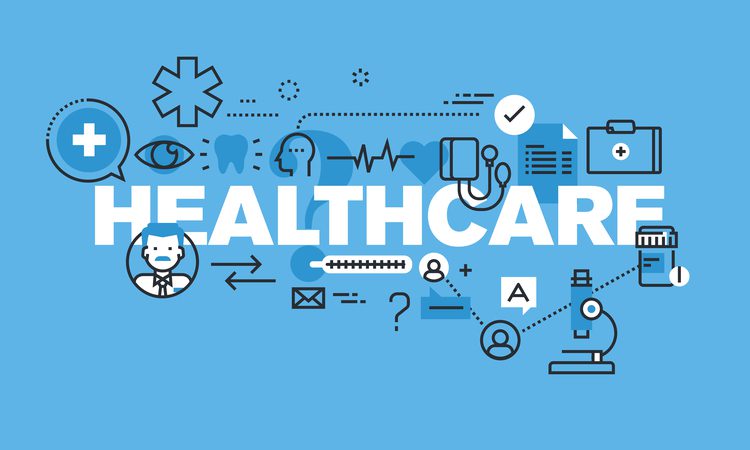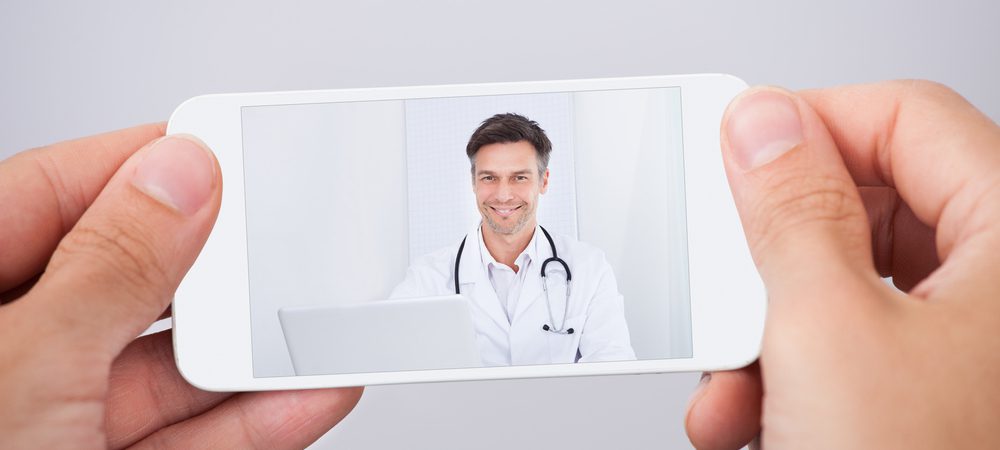
Top Healthcare Marketing Tips for 2024
Healthcare marketing is tricky. But if it was easy, then everybody would be doing it. Whatever your product or service might be — if you’re in the healthcare industry and looking for healthcare marketing tips, you’re in luck.
First, a quick recap:
Healthcare marketing refers to the marketing strategies healthcare providers, insurers, suppliers, and advocacy groups use to attract new patients and increase awareness of their healthcare business.
Do you know that there are several key healthcare marketing trends for 2024 that will position your marketing efforts for success, guaranteed?
To make things easier for you, we’ve divided this article into two parts.
First, we will talk about universal marketing practices that work for companies and medical practices alike. These tried-and-true marketing techniques will give you a considerable competitive advantage and help you market your health product like a pro.
Next, we will focus on the biggest marketing trends and strategies for specific healthcare sectors. We won’t just list them for you; we will explain how and why they work so well.
If you are, for instance, a hospital executive concerned about expanding your patient base or protecting your physicians’ reputations, feel free to skip straight to the second section of this article.
Excited? Then read along!
Also, good things happen to those who wait (and read). If you’re trying to convince your boss to invest in healthcare marketing initiatives in 2024, scroll to the bottom of this article and download our infographic summarizing all points in this article.
 To keep cash and new patients constantly flowing into your business, you need a well-rounded healthcare product marketing strategy.
Start by conducting an audit of your services and products. The benefits of taking stock of your offerings are twofold.
Aside from knowing your business like the back of your hand, you will also get a better sense of which patients you should target. In marketing, this is called developing a “patient persona”; it should be one of the focal points of your marketing efforts.
Begin by taking a look at your current patients. Ask yourself simple questions: ‘Who are my patients?” “How old are they?’ ‘How much do they make?’ ‘What jobs they have?.’
Then, dig deeper: ‘What makes them choose my practice to solve their health problems?’ ‘How are they paying for my services?’
This knowledge will empower you to craft a marketing strategy that truly resonates with your audience and gets the most return for your marketing budget. For example, if you discover you have a tech-savvy demographic, you might consider investing in mobile marketing or place your ads on social media platforms.
The success of your healthcare product marketing strategy, however, depends heavily on the quality of your website. Nothing will get new patients through your door faster than a beautiful website that clearly indicates who you are, what you can do for your patients and where can they find you. The proof is in the statistics: 77 percent of patients use search engines prior to booking an appointment.
Does your website make you the most obvious choice for resolving their health problems? If you’re unsure of the answer, check out our comprehensive article on how to design a great healthcare website.
To keep cash and new patients constantly flowing into your business, you need a well-rounded healthcare product marketing strategy.
Start by conducting an audit of your services and products. The benefits of taking stock of your offerings are twofold.
Aside from knowing your business like the back of your hand, you will also get a better sense of which patients you should target. In marketing, this is called developing a “patient persona”; it should be one of the focal points of your marketing efforts.
Begin by taking a look at your current patients. Ask yourself simple questions: ‘Who are my patients?” “How old are they?’ ‘How much do they make?’ ‘What jobs they have?.’
Then, dig deeper: ‘What makes them choose my practice to solve their health problems?’ ‘How are they paying for my services?’
This knowledge will empower you to craft a marketing strategy that truly resonates with your audience and gets the most return for your marketing budget. For example, if you discover you have a tech-savvy demographic, you might consider investing in mobile marketing or place your ads on social media platforms.
The success of your healthcare product marketing strategy, however, depends heavily on the quality of your website. Nothing will get new patients through your door faster than a beautiful website that clearly indicates who you are, what you can do for your patients and where can they find you. The proof is in the statistics: 77 percent of patients use search engines prior to booking an appointment.
Does your website make you the most obvious choice for resolving their health problems? If you’re unsure of the answer, check out our comprehensive article on how to design a great healthcare website.
 The days of placing a fancy banner or pop up ad are back in 2006 where they belong. In 2024 we have to focus on marketing for the present day – a time where content is king. In addition, with 20 percent of web users having ad blockers installed on their browsers, you’re throwing money away if you’re investing in ad placements.
Here at Digital Authority Partners, we are firm believers that every company should think of itself as a media company first, with its unique value prop as a close second. In a world filled with noise, it’s never been more difficult to get your message heard. But that doesn’t mean you should stop trying, in fact, it’s quite the opposite.
It doesn’t matter what segment of the healthcare industry you’re in. Across the board, there is one simple reality: you have an audience who can buy your products or services. And that audience goes online to educate itself before interacting and transacting with a vendor. Especially in the healthcare space, everyone is trying to learn something new. Whether it’s tips and tricks about technological advancements, new diagnostics options, or general industry news.
And that’s where any healthcare marketer can come in, creating amazing content and saving the day by getting your brand in front of the right audience at the right time.
Tangible example. Let’s say you’re a local clinic in a highly populated metro area. In this scenario, targeting long-tail keywords such as commonly searched symptoms and ‘how do you know if you have…’ terms and you’ll get valuable search traffic to your website and business, as your domain ranking increases.
One more tip: don’t just limit your content creation efforts to just your website. Content strategy is not only about writing and praying that your content will show up on the first page of search results. Also, consider posting original content on social platforms and guest posts on other highly authoritative digital platforms. Whether that’s LinkedIn and Facebook or Instagram and Twitter – you’ve got plenty of platforms to choose from and you should be making the best of the tools available.
The days of placing a fancy banner or pop up ad are back in 2006 where they belong. In 2024 we have to focus on marketing for the present day – a time where content is king. In addition, with 20 percent of web users having ad blockers installed on their browsers, you’re throwing money away if you’re investing in ad placements.
Here at Digital Authority Partners, we are firm believers that every company should think of itself as a media company first, with its unique value prop as a close second. In a world filled with noise, it’s never been more difficult to get your message heard. But that doesn’t mean you should stop trying, in fact, it’s quite the opposite.
It doesn’t matter what segment of the healthcare industry you’re in. Across the board, there is one simple reality: you have an audience who can buy your products or services. And that audience goes online to educate itself before interacting and transacting with a vendor. Especially in the healthcare space, everyone is trying to learn something new. Whether it’s tips and tricks about technological advancements, new diagnostics options, or general industry news.
And that’s where any healthcare marketer can come in, creating amazing content and saving the day by getting your brand in front of the right audience at the right time.
Tangible example. Let’s say you’re a local clinic in a highly populated metro area. In this scenario, targeting long-tail keywords such as commonly searched symptoms and ‘how do you know if you have…’ terms and you’ll get valuable search traffic to your website and business, as your domain ranking increases.
One more tip: don’t just limit your content creation efforts to just your website. Content strategy is not only about writing and praying that your content will show up on the first page of search results. Also, consider posting original content on social platforms and guest posts on other highly authoritative digital platforms. Whether that’s LinkedIn and Facebook or Instagram and Twitter – you’ve got plenty of platforms to choose from and you should be making the best of the tools available.
 Google is on a huge mobile-first kick and there’s absolutely no going back at this point. As of March 26, 2018, Google has rolled out new algorithms for search results in the form of mobile-first indexing. In simplest terms, Google decided to only show search results based on websites’ mobile version versus the web version. So any healthcare organization which doesn’t have a mobile-friendly website will effectively be excluded from all search results except for their branded keywords (aka the name of the company itself).
With a staggering 52 percent of web traffic coming from mobile in 2018, this change should not take anyone by surprise. And every healthcare marketer out there should make sure their company website and healthcare marketing approach are designed and executed with a mobile-first approach.
Other things to consider when you’re revamping your mobile experience. If you’ve got a call-to-action on your pages, make sure the CTA is clear and easy to spot.
Interested in redesigning your healthcare website? We’ve written an article on the top 5 design principles for healthcare website redesigns which you can access right here: 5 tips for healthcare website design initiatives.
The bottom line: if there is one thing you do with your site in 2024, make sure it’s mobile responsive.
Google is on a huge mobile-first kick and there’s absolutely no going back at this point. As of March 26, 2018, Google has rolled out new algorithms for search results in the form of mobile-first indexing. In simplest terms, Google decided to only show search results based on websites’ mobile version versus the web version. So any healthcare organization which doesn’t have a mobile-friendly website will effectively be excluded from all search results except for their branded keywords (aka the name of the company itself).
With a staggering 52 percent of web traffic coming from mobile in 2018, this change should not take anyone by surprise. And every healthcare marketer out there should make sure their company website and healthcare marketing approach are designed and executed with a mobile-first approach.
Other things to consider when you’re revamping your mobile experience. If you’ve got a call-to-action on your pages, make sure the CTA is clear and easy to spot.
Interested in redesigning your healthcare website? We’ve written an article on the top 5 design principles for healthcare website redesigns which you can access right here: 5 tips for healthcare website design initiatives.
The bottom line: if there is one thing you do with your site in 2024, make sure it’s mobile responsive.
 There’s very little that can rival video when it comes to engagement; it’s why TV ads have been the holy grail of marketing in the past and why YouTube is as successful as it is. And in case you weren’t aware, Youtube is not just a video website. It’s actually a search engine. As another author pointed out, with over 4 billion searches per month, YouTube is bigger than Bing, Yahoo, Aol, and Ask.com, combined.
With this in mind – as a healthcare marketer, you should really consider making video marketing front and center of your 2024 marketing plan.
Whether you’re creating a 10 second ad to play before YouTube videos or creating a channel to promote your company’s vision, people and products – video is a marketing technique you really need to experiment with. Video can personalize your health brand and make it more approachable in an industry where people are often intimidated by doctors and medical equipment (think white-coat syndrome).
With video, aim for quality and quantity combined – whether that’s from yourself or the media team (depending on company size) and don’t let perfection get in the way of ‘good enough.’
There’s always a way to improve upon video content, but don’t fall into this paralysis of preventing content from being launched. Get good stuff out there and, over time, the performance will speak for itself. Anyone with a smartphone is a video-maker – so make sure to encourage every member of your marketing team to document anything that could provide value to your ideal customers.
Tangible example: Orlando Health has a great series of videos on YouTube where doctors, nurses, and nurse practitioners talk about who they are, their work experiences, but also how different medical conditions are treated. They’re a fabulous example of health video marketing done right.
There’s very little that can rival video when it comes to engagement; it’s why TV ads have been the holy grail of marketing in the past and why YouTube is as successful as it is. And in case you weren’t aware, Youtube is not just a video website. It’s actually a search engine. As another author pointed out, with over 4 billion searches per month, YouTube is bigger than Bing, Yahoo, Aol, and Ask.com, combined.
With this in mind – as a healthcare marketer, you should really consider making video marketing front and center of your 2024 marketing plan.
Whether you’re creating a 10 second ad to play before YouTube videos or creating a channel to promote your company’s vision, people and products – video is a marketing technique you really need to experiment with. Video can personalize your health brand and make it more approachable in an industry where people are often intimidated by doctors and medical equipment (think white-coat syndrome).
With video, aim for quality and quantity combined – whether that’s from yourself or the media team (depending on company size) and don’t let perfection get in the way of ‘good enough.’
There’s always a way to improve upon video content, but don’t fall into this paralysis of preventing content from being launched. Get good stuff out there and, over time, the performance will speak for itself. Anyone with a smartphone is a video-maker – so make sure to encourage every member of your marketing team to document anything that could provide value to your ideal customers.
Tangible example: Orlando Health has a great series of videos on YouTube where doctors, nurses, and nurse practitioners talk about who they are, their work experiences, but also how different medical conditions are treated. They’re a fabulous example of health video marketing done right.
 Whether it’s text messaging, chatbots or the most basic of chat options that pop up on your site, there are many multichannel techniques healthcare marketers should consider implementing in 2024. Anything that offers a unique user experience and increases user engagement is key to the success of a health marketing campaign.
The more touchpoint options you can provide your web or mobile visitors, the better your customer experience will be (and your engagement rates). Everybody is different and although some people may love to engage with chatbots, others may go to straight to Twitter or the Facebook page to report issues they have with your brand.
Even the simplest option, a landline number, is a huge benefit on a site. Even if only a few will call your number, it’s critical to show your contact information prominently on your site.
Keep your options open, appreciate your customers, and their choices and they’ll leave happier than they came.
Whether it’s text messaging, chatbots or the most basic of chat options that pop up on your site, there are many multichannel techniques healthcare marketers should consider implementing in 2024. Anything that offers a unique user experience and increases user engagement is key to the success of a health marketing campaign.
The more touchpoint options you can provide your web or mobile visitors, the better your customer experience will be (and your engagement rates). Everybody is different and although some people may love to engage with chatbots, others may go to straight to Twitter or the Facebook page to report issues they have with your brand.
Even the simplest option, a landline number, is a huge benefit on a site. Even if only a few will call your number, it’s critical to show your contact information prominently on your site.
Keep your options open, appreciate your customers, and their choices and they’ll leave happier than they came.
 Your healthcare online reputation is imperative for the overall success of your business. Even if you’ve got the best product around, if your company has a less than stellar reputation online – you’re unlikely to keep an audience or create conversions.
According to Pew Research:
Your healthcare online reputation is imperative for the overall success of your business. Even if you’ve got the best product around, if your company has a less than stellar reputation online – you’re unlikely to keep an audience or create conversions.
According to Pew Research:
 Although that is a great place to start, it is not nearly enough to engage users and turn them into patients. To generate more than a dozen likes and shares, you have to create — and stick to — a social media healthcare marketing plan.
This entails having a consistent posting schedule, sharing original and visually appealing posts, replying to reviews, getting patient feedback via live Q&A, as well as teaming up with influencers.
It might sound like a lot of work, especially if all you have done so far was to post discounts on Facebook once in a blue moon or answer a comment here and there.
Many busy practitioners can’t even fathom pouring more time into social media.
Let’s say you’re running a family practice. You’re probably seeing between 20 and 30 patients a day, and spending up to 10 hours handling paperwork each week.
Staying on top of social media doesn’t seem like a priority. A mindset shift could ease your feelings of being overwhelmed with tasks to complete. Instead of looking at social media as a tiresome, energy-depleting chore, see it for what it really is: a digital window to your patients.
Do you need more reasons why social media is important in healthcare? Let’s take a look at some stats:
Although that is a great place to start, it is not nearly enough to engage users and turn them into patients. To generate more than a dozen likes and shares, you have to create — and stick to — a social media healthcare marketing plan.
This entails having a consistent posting schedule, sharing original and visually appealing posts, replying to reviews, getting patient feedback via live Q&A, as well as teaming up with influencers.
It might sound like a lot of work, especially if all you have done so far was to post discounts on Facebook once in a blue moon or answer a comment here and there.
Many busy practitioners can’t even fathom pouring more time into social media.
Let’s say you’re running a family practice. You’re probably seeing between 20 and 30 patients a day, and spending up to 10 hours handling paperwork each week.
Staying on top of social media doesn’t seem like a priority. A mindset shift could ease your feelings of being overwhelmed with tasks to complete. Instead of looking at social media as a tiresome, energy-depleting chore, see it for what it really is: a digital window to your patients.
Do you need more reasons why social media is important in healthcare? Let’s take a look at some stats:
 If your healthcare business has a physical location, there’s nothing that better supports your marketing efforts than location-based SEO and geotagging your location in posts.
Creating content that is location-specific is a great way to get targeted users to come to your website or mobile app. Many healthcare marketers use long-tail SEO search terms to create content their customers would resonate with and get qualified local traffic to their digital platforms.
So, for example, if you’re in Houston, Texas, and you run a dental practice – it’s a smart idea to run marketing campaigns and create unique content around topics like: ‘best dentists in Houston’ or ‘dental procedures in Houston.’ Other examples may include ‘Dental care Houston’ or even more specific ‘Where is the best dental practice in Houston, Texas.’ Ranking for all these keywords on the first page of search results will generate valuable and qualified traffic to your dental practice.
Another example can be around Facebook area-specific ads and geotagging locations on Instagram. Both are great tools for businesses to leverage social media posts around getting local traffic to your front door. This way, users checking out your pics and posts are ones you really want as your future customers.
If your healthcare business has a physical location, there’s nothing that better supports your marketing efforts than location-based SEO and geotagging your location in posts.
Creating content that is location-specific is a great way to get targeted users to come to your website or mobile app. Many healthcare marketers use long-tail SEO search terms to create content their customers would resonate with and get qualified local traffic to their digital platforms.
So, for example, if you’re in Houston, Texas, and you run a dental practice – it’s a smart idea to run marketing campaigns and create unique content around topics like: ‘best dentists in Houston’ or ‘dental procedures in Houston.’ Other examples may include ‘Dental care Houston’ or even more specific ‘Where is the best dental practice in Houston, Texas.’ Ranking for all these keywords on the first page of search results will generate valuable and qualified traffic to your dental practice.
Another example can be around Facebook area-specific ads and geotagging locations on Instagram. Both are great tools for businesses to leverage social media posts around getting local traffic to your front door. This way, users checking out your pics and posts are ones you really want as your future customers.
 All expert healthcare marketers should consider leveraging advanced analytics and AI techniques in their marketing plans in 2024.
Using analytics and AI isn’t anything new, but for a lot of companies looking to make a splash, it could be a welcomed change. Using the simplest of tools such as Google Search Console is a great start to understand consumer behavior when it comes to the healthcare sector.
You can judge a lot about your audience by their behavior, by looking at user heat-maps, search terms, and user activity to optimize your marketing campaigns over time.
With user trends readily available (and your competitors are probably already in on it), there’s never been a better time to jump in and getting a better understanding of your users with AI algorithms.
All expert healthcare marketers should consider leveraging advanced analytics and AI techniques in their marketing plans in 2024.
Using analytics and AI isn’t anything new, but for a lot of companies looking to make a splash, it could be a welcomed change. Using the simplest of tools such as Google Search Console is a great start to understand consumer behavior when it comes to the healthcare sector.
You can judge a lot about your audience by their behavior, by looking at user heat-maps, search terms, and user activity to optimize your marketing campaigns over time.
With user trends readily available (and your competitors are probably already in on it), there’s never been a better time to jump in and getting a better understanding of your users with AI algorithms.
 Wellness was one of the most popular trends in sweeping the healthcare industry in 2018.
Consumers are fascinated with the idea of living healthier lives and although some healthcare companies are already creating content about wellness, this year, hospitals will need to step up their game in this space as well.
Creating content that helps your ideal customers live better and healthier lives is a great way to make an impact in your niche. For example, Blue Cross Blue Shield recently made the news when it announced they would be providing Fitbit wristbands at a discount to each of its members.
Wellness was one of the most popular trends in sweeping the healthcare industry in 2018.
Consumers are fascinated with the idea of living healthier lives and although some healthcare companies are already creating content about wellness, this year, hospitals will need to step up their game in this space as well.
Creating content that helps your ideal customers live better and healthier lives is a great way to make an impact in your niche. For example, Blue Cross Blue Shield recently made the news when it announced they would be providing Fitbit wristbands at a discount to each of its members.
 Marketing a healthcare organization is not that different from promoting a small medical practice. But bigger businesses mean higher stakes, more complex goals and bigger obstacles to tackle.
These four major goals represent the backbone of a successful digital marketing strategy for your hospital:
Marketing a healthcare organization is not that different from promoting a small medical practice. But bigger businesses mean higher stakes, more complex goals and bigger obstacles to tackle.
These four major goals represent the backbone of a successful digital marketing strategy for your hospital:
 The Istanbul-based center, which is affiliated with Johns Hopkins Medical Center, gained international fame for its excellent cardiology and oncology programs. Their website however, does more than promise patients the best treatment for cancer or heart disease. That’s something their biggest competitors also do.
The Istanbul-based center, which is affiliated with Johns Hopkins Medical Center, gained international fame for its excellent cardiology and oncology programs. Their website however, does more than promise patients the best treatment for cancer or heart disease. That’s something their biggest competitors also do.
 Even so, there are a variety of online medical marketing tools you can use to get more patients in the door. First, let’s briefly go over the basics:
Even so, there are a variety of online medical marketing tools you can use to get more patients in the door. First, let’s briefly go over the basics:
Watch this video to learn more about the Digital Authority Partners approach to Medical SEO!
Fine-tune your healthcare product marketing strategy
Whether you run a solo practice or a small clinic with less than 100 employees, your services are the product you’re trying to sell. Word-of-mouth advertising can only take you so far. You’ll eventually reach a standstill and growth will slow down. To keep cash and new patients constantly flowing into your business, you need a well-rounded healthcare product marketing strategy.
Start by conducting an audit of your services and products. The benefits of taking stock of your offerings are twofold.
Aside from knowing your business like the back of your hand, you will also get a better sense of which patients you should target. In marketing, this is called developing a “patient persona”; it should be one of the focal points of your marketing efforts.
Begin by taking a look at your current patients. Ask yourself simple questions: ‘Who are my patients?” “How old are they?’ ‘How much do they make?’ ‘What jobs they have?.’
Then, dig deeper: ‘What makes them choose my practice to solve their health problems?’ ‘How are they paying for my services?’
This knowledge will empower you to craft a marketing strategy that truly resonates with your audience and gets the most return for your marketing budget. For example, if you discover you have a tech-savvy demographic, you might consider investing in mobile marketing or place your ads on social media platforms.
The success of your healthcare product marketing strategy, however, depends heavily on the quality of your website. Nothing will get new patients through your door faster than a beautiful website that clearly indicates who you are, what you can do for your patients and where can they find you. The proof is in the statistics: 77 percent of patients use search engines prior to booking an appointment.
Does your website make you the most obvious choice for resolving their health problems? If you’re unsure of the answer, check out our comprehensive article on how to design a great healthcare website.
To keep cash and new patients constantly flowing into your business, you need a well-rounded healthcare product marketing strategy.
Start by conducting an audit of your services and products. The benefits of taking stock of your offerings are twofold.
Aside from knowing your business like the back of your hand, you will also get a better sense of which patients you should target. In marketing, this is called developing a “patient persona”; it should be one of the focal points of your marketing efforts.
Begin by taking a look at your current patients. Ask yourself simple questions: ‘Who are my patients?” “How old are they?’ ‘How much do they make?’ ‘What jobs they have?.’
Then, dig deeper: ‘What makes them choose my practice to solve their health problems?’ ‘How are they paying for my services?’
This knowledge will empower you to craft a marketing strategy that truly resonates with your audience and gets the most return for your marketing budget. For example, if you discover you have a tech-savvy demographic, you might consider investing in mobile marketing or place your ads on social media platforms.
The success of your healthcare product marketing strategy, however, depends heavily on the quality of your website. Nothing will get new patients through your door faster than a beautiful website that clearly indicates who you are, what you can do for your patients and where can they find you. The proof is in the statistics: 77 percent of patients use search engines prior to booking an appointment.
Does your website make you the most obvious choice for resolving their health problems? If you’re unsure of the answer, check out our comprehensive article on how to design a great healthcare website.
Content Marketing
Content marketing and educational content is the smartest way to attract new patients and customers for your healthcare business in 2024. The days of placing a fancy banner or pop up ad are back in 2006 where they belong. In 2024 we have to focus on marketing for the present day – a time where content is king. In addition, with 20 percent of web users having ad blockers installed on their browsers, you’re throwing money away if you’re investing in ad placements.
Here at Digital Authority Partners, we are firm believers that every company should think of itself as a media company first, with its unique value prop as a close second. In a world filled with noise, it’s never been more difficult to get your message heard. But that doesn’t mean you should stop trying, in fact, it’s quite the opposite.
It doesn’t matter what segment of the healthcare industry you’re in. Across the board, there is one simple reality: you have an audience who can buy your products or services. And that audience goes online to educate itself before interacting and transacting with a vendor. Especially in the healthcare space, everyone is trying to learn something new. Whether it’s tips and tricks about technological advancements, new diagnostics options, or general industry news.
And that’s where any healthcare marketer can come in, creating amazing content and saving the day by getting your brand in front of the right audience at the right time.
Tangible example. Let’s say you’re a local clinic in a highly populated metro area. In this scenario, targeting long-tail keywords such as commonly searched symptoms and ‘how do you know if you have…’ terms and you’ll get valuable search traffic to your website and business, as your domain ranking increases.
One more tip: don’t just limit your content creation efforts to just your website. Content strategy is not only about writing and praying that your content will show up on the first page of search results. Also, consider posting original content on social platforms and guest posts on other highly authoritative digital platforms. Whether that’s LinkedIn and Facebook or Instagram and Twitter – you’ve got plenty of platforms to choose from and you should be making the best of the tools available.
The days of placing a fancy banner or pop up ad are back in 2006 where they belong. In 2024 we have to focus on marketing for the present day – a time where content is king. In addition, with 20 percent of web users having ad blockers installed on their browsers, you’re throwing money away if you’re investing in ad placements.
Here at Digital Authority Partners, we are firm believers that every company should think of itself as a media company first, with its unique value prop as a close second. In a world filled with noise, it’s never been more difficult to get your message heard. But that doesn’t mean you should stop trying, in fact, it’s quite the opposite.
It doesn’t matter what segment of the healthcare industry you’re in. Across the board, there is one simple reality: you have an audience who can buy your products or services. And that audience goes online to educate itself before interacting and transacting with a vendor. Especially in the healthcare space, everyone is trying to learn something new. Whether it’s tips and tricks about technological advancements, new diagnostics options, or general industry news.
And that’s where any healthcare marketer can come in, creating amazing content and saving the day by getting your brand in front of the right audience at the right time.
Tangible example. Let’s say you’re a local clinic in a highly populated metro area. In this scenario, targeting long-tail keywords such as commonly searched symptoms and ‘how do you know if you have…’ terms and you’ll get valuable search traffic to your website and business, as your domain ranking increases.
One more tip: don’t just limit your content creation efforts to just your website. Content strategy is not only about writing and praying that your content will show up on the first page of search results. Also, consider posting original content on social platforms and guest posts on other highly authoritative digital platforms. Whether that’s LinkedIn and Facebook or Instagram and Twitter – you’ve got plenty of platforms to choose from and you should be making the best of the tools available.
Interested in learning more about how to put together a healthcare content marketing plan that works in 2024? Read: How to Create A Healthcare Marketing Plan: All You Need to Know
Mobile Responsive Website
If your healthcare website is not mobile responsive in 2024, you will get virtually no organic traffic to your healthcare business website. Google is on a huge mobile-first kick and there’s absolutely no going back at this point. As of March 26, 2018, Google has rolled out new algorithms for search results in the form of mobile-first indexing. In simplest terms, Google decided to only show search results based on websites’ mobile version versus the web version. So any healthcare organization which doesn’t have a mobile-friendly website will effectively be excluded from all search results except for their branded keywords (aka the name of the company itself).
With a staggering 52 percent of web traffic coming from mobile in 2018, this change should not take anyone by surprise. And every healthcare marketer out there should make sure their company website and healthcare marketing approach are designed and executed with a mobile-first approach.
Other things to consider when you’re revamping your mobile experience. If you’ve got a call-to-action on your pages, make sure the CTA is clear and easy to spot.
Interested in redesigning your healthcare website? We’ve written an article on the top 5 design principles for healthcare website redesigns which you can access right here: 5 tips for healthcare website design initiatives.
The bottom line: if there is one thing you do with your site in 2024, make sure it’s mobile responsive.
Google is on a huge mobile-first kick and there’s absolutely no going back at this point. As of March 26, 2018, Google has rolled out new algorithms for search results in the form of mobile-first indexing. In simplest terms, Google decided to only show search results based on websites’ mobile version versus the web version. So any healthcare organization which doesn’t have a mobile-friendly website will effectively be excluded from all search results except for their branded keywords (aka the name of the company itself).
With a staggering 52 percent of web traffic coming from mobile in 2018, this change should not take anyone by surprise. And every healthcare marketer out there should make sure their company website and healthcare marketing approach are designed and executed with a mobile-first approach.
Other things to consider when you’re revamping your mobile experience. If you’ve got a call-to-action on your pages, make sure the CTA is clear and easy to spot.
Interested in redesigning your healthcare website? We’ve written an article on the top 5 design principles for healthcare website redesigns which you can access right here: 5 tips for healthcare website design initiatives.
The bottom line: if there is one thing you do with your site in 2024, make sure it’s mobile responsive.
Schedule Your Free Consultation
Looking To Meet Now? Schedule A Meeting Today
Video Marketing
Video marketing is the best channel for healthcare marketers to build trust and increase awareness around their healthcare business in 2024. There’s very little that can rival video when it comes to engagement; it’s why TV ads have been the holy grail of marketing in the past and why YouTube is as successful as it is. And in case you weren’t aware, Youtube is not just a video website. It’s actually a search engine. As another author pointed out, with over 4 billion searches per month, YouTube is bigger than Bing, Yahoo, Aol, and Ask.com, combined.
With this in mind – as a healthcare marketer, you should really consider making video marketing front and center of your 2024 marketing plan.
Whether you’re creating a 10 second ad to play before YouTube videos or creating a channel to promote your company’s vision, people and products – video is a marketing technique you really need to experiment with. Video can personalize your health brand and make it more approachable in an industry where people are often intimidated by doctors and medical equipment (think white-coat syndrome).
With video, aim for quality and quantity combined – whether that’s from yourself or the media team (depending on company size) and don’t let perfection get in the way of ‘good enough.’
There’s always a way to improve upon video content, but don’t fall into this paralysis of preventing content from being launched. Get good stuff out there and, over time, the performance will speak for itself. Anyone with a smartphone is a video-maker – so make sure to encourage every member of your marketing team to document anything that could provide value to your ideal customers.
Tangible example: Orlando Health has a great series of videos on YouTube where doctors, nurses, and nurse practitioners talk about who they are, their work experiences, but also how different medical conditions are treated. They’re a fabulous example of health video marketing done right.
There’s very little that can rival video when it comes to engagement; it’s why TV ads have been the holy grail of marketing in the past and why YouTube is as successful as it is. And in case you weren’t aware, Youtube is not just a video website. It’s actually a search engine. As another author pointed out, with over 4 billion searches per month, YouTube is bigger than Bing, Yahoo, Aol, and Ask.com, combined.
With this in mind – as a healthcare marketer, you should really consider making video marketing front and center of your 2024 marketing plan.
Whether you’re creating a 10 second ad to play before YouTube videos or creating a channel to promote your company’s vision, people and products – video is a marketing technique you really need to experiment with. Video can personalize your health brand and make it more approachable in an industry where people are often intimidated by doctors and medical equipment (think white-coat syndrome).
With video, aim for quality and quantity combined – whether that’s from yourself or the media team (depending on company size) and don’t let perfection get in the way of ‘good enough.’
There’s always a way to improve upon video content, but don’t fall into this paralysis of preventing content from being launched. Get good stuff out there and, over time, the performance will speak for itself. Anyone with a smartphone is a video-maker – so make sure to encourage every member of your marketing team to document anything that could provide value to your ideal customers.
Tangible example: Orlando Health has a great series of videos on YouTube where doctors, nurses, and nurse practitioners talk about who they are, their work experiences, but also how different medical conditions are treated. They’re a fabulous example of health video marketing done right.
Multichannel Initiatives and Customer Touch-Points
Customers are omnichannel, and your healthcare marketing initiatives should be too. From online chatting, to contact forms and a prominent display of business phone numbers, healthcare marketers must reduce friction online and encourage patients to get in touch with healthcare businesses through all available channels.Online Reputation
Online reputation can make or break your business – and marketing efforts. Make sure you control the narrative around what users say about your healthcare business online. And take corrective measures when needed.- One in three American adults has gone online to figure out a medical condition.
- 72 percent of Internet users say they looked online for health information within the past year.
- 47 percent of Internet users search for information about doctors or other health professionals before engaging with a health business.
- 38 percent of Internet users search for information about hospitals and other medical facilities.
- The most commonly researched topics are specific diseases or conditions; treatments or procedures; and doctors or other health professionals.
Design a Powerful Social Media Healthcare Marketing Plan
There’s no shame in having one of your staffers devote a couple of hours a week to manage your business Facebook page. Perhaps they promote your services, reply to comments and share content they think your audience might like.- A majority of Americans use social media to research their health symptoms
- 80 percent of internet users are searching for health information
- 72 percent of all internet users are active on social media
Location-based SEO
Location-based SEO is great tool for every healthcare organization with a local branch.Advanced Analytics and Artificial Intelligence
Advanced analytics and artificial intelligence (AI) can help healthcare marketing initiatives get in front of the right customers, at the right time, with the right product.Schedule Your Free Consultation
Looking To Meet Now? Schedule A Meeting Today
Consumer Focus: Wellness
Leveraging wellness as a talking point in your healthcare marketing campaigns will align your business objectives with what customers care about. And it could score you some great PR and earned media too.Digital marketing strategies for hospitals — and the biggest marketing trends in 2024
 Marketing a healthcare organization is not that different from promoting a small medical practice. But bigger businesses mean higher stakes, more complex goals and bigger obstacles to tackle.
These four major goals represent the backbone of a successful digital marketing strategy for your hospital:
Marketing a healthcare organization is not that different from promoting a small medical practice. But bigger businesses mean higher stakes, more complex goals and bigger obstacles to tackle.
These four major goals represent the backbone of a successful digital marketing strategy for your hospital:
- Use content marketing to turn prospects into patients
- Improve your hospital’s brand
- Help your physicians build and maintain a flawless reputation
- Implement tech-enabled solutions
1. Use content marketing to turn prospects into patients
Content marketing is more than just a buzz phrase. When performed correctly, it can establish you as an industry leader and connect you with more patients. Content marketing methods are not as direct as traditional advertising, which simply tells customers about a product or service. Content marketing does more than sell for you; it builds trust. And in the age of fake news, trust has become the ultimate selling tool. Over 73 percent of consumers consider transparency more important than price. Show that you actually understand your prospects’ challenges or pain points with in-depth health information. People turn to the internet for answers about their symptoms, diagnosis and treatment plans. They read articles and watch videos before and after stepping into a physician’s office. They scan your website for patient stories, details about surgical procedures or post-recovery tips. Northwell Health, the largest health system in New York, has successfully capitalized on this trend. Since launching its health and wellness website, The Well, last year, Northwell has turned into a health content hub. While their competitors are just beginning to grasp the power of testimonials, Northwell is betting on emotional storytelling and distributing their content on mainstream outlets such as Medium. Recurring features – including “Dear Doctor,” “Day in the Life” and “True Story” – allow readers a glimpse into medical issues as seen from the perspective of physicians, patients, and caregivers. If you don’t have the knowledge or the staff to take on such a project, consider bringing in an outside resource or consultant to add these elements to your marketing strategy.2. Strengthen your hospital’s online brand
There are countless ways to explain what a brand is and isn’t. In the end, all definitions boil down to this: your brand encompasses all the things that differentiate you from the crowd. What’s unique about your hospital? The better you get at identifying and capitalizing on your strengths, the stronger your brand will be. Once again, your website comes in handy. Many healthcare organizations struggle to bring their expertise beyond the hospital walls and into the digital space. Don’t be one of them. When patients click on your website, they should immediately be able to see your organization’s assets. Do you use high-tech devices such as virtual reality systems? Do you deliver world-class patient care? Make sure that when prospective patients arrive on your site that your strengths appear first, no matter what those special talents and skills may be. Include high-quality photos of your laboratories and patient rooms, list all industry awards received and professional memberships. Be sure to highlight the benefits you offer but that your competitors don’t. A greater focus on patient experience — inside and outside health facilities — is one of the main hospital marketing trends in 2024. The patient experience of the future is all about convenience; amenities deliver just that. Aside from an effortless website experience, amenities have an incredible potential in winning you more patients. A recent study found that a “one-standard-deviation increase in the amenities measure raises a hospital’s demand by 38 percent, while a similar increase in the clinical quality measure raises demand by only 13 percent.” Anadolu Medical Center managed to build a strong online brand identity by showcasing their amenities. The Istanbul-based center, which is affiliated with Johns Hopkins Medical Center, gained international fame for its excellent cardiology and oncology programs. Their website however, does more than promise patients the best treatment for cancer or heart disease. That’s something their biggest competitors also do.
The Istanbul-based center, which is affiliated with Johns Hopkins Medical Center, gained international fame for its excellent cardiology and oncology programs. Their website however, does more than promise patients the best treatment for cancer or heart disease. That’s something their biggest competitors also do.
3. Reputation management — the key to convert new patients
Here’s a simple truth: your online reputation is only as good as your physicians. Every time one of your doctors receives a negative review on websites like Yelp, gets bad press coverage, or worse, gets sued over medical negligence, your hospital’s reputation will also suffer. You don’t need to be a marketing genius to realize that hospitals with weak or questionable reputations draw fewer patients. In fact, for 90 percent of prospective patients, your reputation matters more than whether you are in their insurance network or whether their doctor recommended your facility. This is just one reason why reputation management is another marketing hospital trend to watch in 2024. Some of the nation’s most respected hospitals started taking reputation management seriously before it was even a thing. Back in 2016, Mount Sinai Hospital in New York City lost no time in suspending one of their well-respected doctors after he was accused of drugging a woman and groping her in the ER room. By doing so, Mount Sinai proved that their patients’ safety trumps everything else. When it comes to online crises, things can rapidly spiral out of control. If one of your employees gets caught on camera snapping at a patient, as happened last year in this Silicon Valley hospital, your facility’s name will be all over the Internet in a matter of minutes. It would be unreasonable to expect all your medical staff to maintain a pristine reputation. You can, however, provide reputation management training. Something as simple as sharing our “11 Online Reputation Management Techniques for Doctors” could make a world difference in the way your staff interact with patients outside the hospital. The best way to ensure that your organization can withstand even the worst public relations crises is by working with a digital marketing agency. This is NOT an area where you should be thrifty. Here’s why you can’t afford not to hire this type of help:- A single negative article on the first page of search results can cost your company a whopping 22 percent of the business.
- Every lost patient costs your facility about $500,000 over the person’s lifetime.
- You might also start seeing lower reimbursement rates from payers.
4. Implement tech-enabled solutions
The digital revolution in healthcare is already in full swing. Digitally savvy patients want healthcare services at their fingertips. This is not only true for millennials. Baby boomers got more comfortable using tech-enabled solutions that not only allow them to manage chronic illnesses but also to stay independent. From health apps to telemedicine and Alexa skills, there are plenty of ways to expand your patient base without investing a fortune. Oddly, as numerous as health apps are in the market today, not many come from hospitals. Some organizations use mobile apps to enhance clinical communication and workflows. But only 3 percent of healthcare facilities in the U.S. offer their own patient-facing apps. The list includes Johns Hopkins Hospital, Mayo Clinic, UCLA Medical Center and Northwestern Memorial Hospital. These also happen to be among the best-rated hospitals and they consistently report the highest patient satisfaction. The Mayo Clinic’s app, for example, allows patients to request an appointment with their best specialists and view test results. For common ailments, patients can even get care within an hour, with only a few taps. What makes the app really useful to patients are their daily health news features. Another tech tool you should consider as part of your digital marketing strategy? Telemedicine. This technology will allow you to deliver focused, one-on-one care to more patients; where and when they need it. Right now, your physicians only see those patients who can afford to travel to them, take time off from work or find a babysitter for their children. By incorporating telehealth services, your staff will be able to reach hundreds or thousands of others. We’re talking about those who live in surrounding rural areas, busy professionals and families with school-age children. Here are some statistics showing patient willingness to embrace telehealth services:- 60 percent of millennials support the use of telehealth to replace in-office visits.
- 74 percent of consumers say they are at least open to a virtual health visit.
- 83 percent of patients who have participated in a telehealth visit felt they received good quality care.
Online Marketing for Medical Practices
Regardless of the type of your medical practice, you most likely can’t afford to allocate the same budget for online marketing as a larger health organization. Even so, there are a variety of online medical marketing tools you can use to get more patients in the door. First, let’s briefly go over the basics:
Even so, there are a variety of online medical marketing tools you can use to get more patients in the door. First, let’s briefly go over the basics:
- Create an easy-to-navigate and mobile-friendly website
- Do the bare minimum for SEO. We recently wrote a helpful article on this topic to get you started
- Claim your Google business listing online. See “Strategy Number 5” in this article we posted a while ago
- Clean up your online reputation
- Get traction on social media. Here are nine social media mistakes to avoid
Summary:
In this article, we discussed the most powerful healthcare marketing techniques any marketer should consider implementing in 2024. Are you confused about how all these strategies come together into a cohesive strategy? Check out our step by step Healthcare Marketing Plan Guide and Our Healthcare Public Relations Guide. Lastly, here’s a quick summary of what we believe should be your primary focus areas next year:- Invest in content marketing: Content marketing and educational content is the smartest way to attract new patients and customers for your healthcare business in 2024.
- Make sure your website is mobile responsive: If your healthcare website is not mobile responsive in 2024, you will not get any organic traffic to your business.
- Use video marketing to attract new patients and healthcare customers: Video marketing is the best channel for healthcare marketers to build trust and increase awareness around their healthcare business in 2024.
- Invest in multichannel initiatives and customer touch-points: Customers are omnichannel, and your marketing should be too.
- Invest in your online reputation: Online reputation can make or break your business – and marketing efforts. Make sure you control the narrative around what users say about your healthcare business online.
- Use social media like a pro for your healthcare marketing campaigns: Social media, when done correctly, can increase a healthcare brand’s affinity, online engagement rates, and long term user retention.
- Invest in location-based SEO: Location-based SEO is crucial for every healthcare organization with a local branch.
- Advanced analytics and AI: Advanced analytics and AI can help healthcare marketing initiatives to get in front of the right customers, at the right time, with the right product.
- Jump on the wagon with this year’s primary consumer focus: wellness: Leveraging wellness as a talking point in your healthcare marketing campaigns will align your business objectives with what customers care about.
| |
Want To Meet Our Expert Team?
Book a meeting directly here



